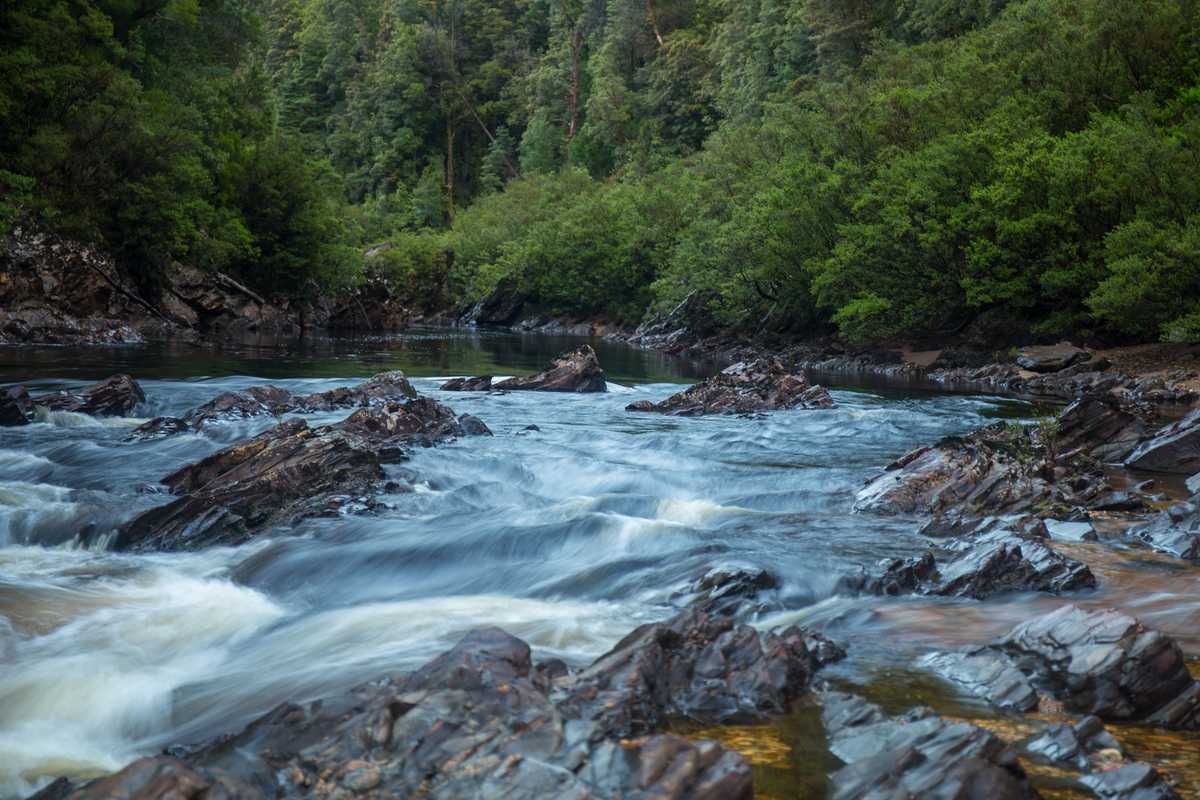by Elspeth Callender – Jetstar Airways Pty Limited
source: 3 ways to explore Tasmania’s wilderness
It is over 30 years since UNESCO bestowed World Heritage Area status on the Tasmanian wilderness, a vast tract of land offering rich rewards for adventure seekers. Here are three memorable ways to experience it.
1. Hiking: Overland Track
Where is it? Cradle Mountain-Lake St Clair National Park
Duration: 6 days (season runs 1 October–1 May)
Setting off from the century-old Waldheim Chalet into 125,000ha of Tasmanian wilderness is relatively undaunting when you know, as I did, that the solid structure of Barn Bluff Hut is the late-afternoon destination.
The effort of hiking 12km for the second day in a row is rewarded with magnificent views of this ancient glacial landscape and the no less welcome sight of comfort food offered at the door of Pine Forest Moor Hut. Deep muddy sections near a deserted coalmine the following day don’t concern me, because I’m sure I’ll be able to clean and dry my walking pants and gaiters in Pelion Plains Hut.
Without reservation I agree to climb Mount Ossa – an optional side trip – knowing for a fact that Kia Ora Hut has a couch and a cushioned footrest. I can even countenance a swim in the fresh alpine waters of Fergusson Falls thanks to the hot shower, drying room, three-course meal, wine and warm bed waiting for me in Windy Ridge Hut.
2. Canyoning: Dove Canyon
Where is it? Cradle Mountain-Lake St Clair National Park
Duration: 1 day (6–8 hours, season runs November–April)
Wearing layers of wetsuit, a purple personal flotation device and a red helmet with the name Sheila on it, I’m the first of the group to leap off Freestyle Falls into a tannin-brown pool six metres below. Running on adrenaline from our hike into the wilderness and 15m abseil into Dove Canyon, I volunteer to be number one. But I can’t stop myself from yelling as I jump.
Buoyant in our canyoning gear, we float through some of the freshest water on the planet. It comes from Dove Lake, an expanse filled with the rain that falls on Cradle Mountain. Our guides, who obviously know this canyon like the backs of their well-worn abseiling gloves, talk us through each natural obstacle: Pitfalls, Log Slide, Tea Cup Falls, Horsey Falls.
At the end of the day we return to the bustling Cradle Mountain Visitors Centre with a deeper appreciation of this truly gorgeous national park.
3. Rafting: Franklin River
Where is it? Franklin-Gordon Wild Rivers National Park
Duration: 10 days (season runs October–early April)
“This is never going to work,” I think to myself as I survey the group. Between the eight of us, we range in age from 16 to 70-plus, and none of us have any rafting experience.
It’s been a dry summer and the water’s low, so the first day is mainly spent carrying our boats along the Collingwood River. Divided between two rafts, we quickly learn to work as teams and I’m surprised at how efficient we are by the time the first of our wilderness campsites comes into view.
Rafting the Franklin River begins the next day. I soon lose track of time as we live and breathe this wild stretch of Tasmanian water. We depend on each other to negotiate tricky sections of rapids, and everyone is bumped from the raft at some stage and needs to be rescued. There’s a lot of talking, some tears and loads of laughter.
By the time we meet the Gordon River, I feel I’ve spent a lifetime with these people. As I survey the group, I think to myself that this could not have worked better.
Take me there
Water by Nature Tasmania: 1800 111 142, franklinriver.com
Cradle Mountain Huts: +61 03 6392 2211, cradlehuts.com.au
Cradle Mountain Canyons: 1300 032 384, cradlemountaincanyons.com.au

Did you know?
- December 2012 marked the 30th anniversary of the Unesco-ordained Tasmanian Wilderness World heritage area (TWWHA)
- The TWWHA covers one fifth of Tasmania’s landmass, spanning 1.38 million hectares – an area that makes up about 20% of the island
- One of the last great wildernesses on earth, it offers the most pristine example of temperate rainforest found in Australia
by Elspeth Callender – Jetstar Airways Pty Limited
source: 3 ways to explore Tasmania’s wilderness

